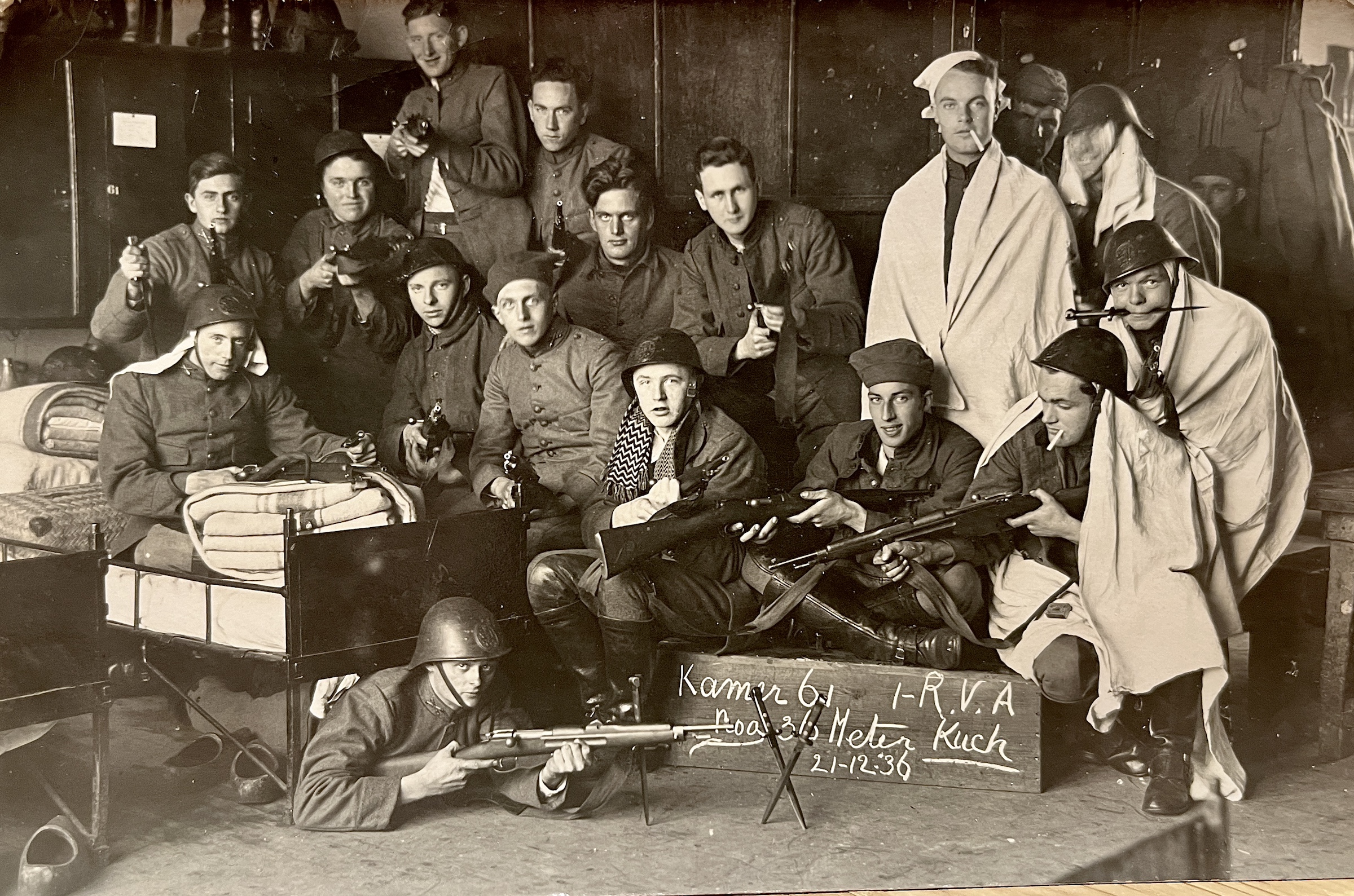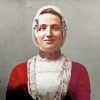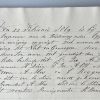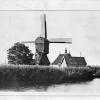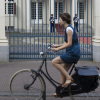A piece of paper and a photograph
The first thing out of the envelope is a typewritten note, dated June 20th, 1944. It’s an original, judging by the pockmarked elevation of the letters; I can feel the indentations. It’s since been variously folded, punchholed, and filed in a ring binder, before ending up in a small pile of my fathers papers.
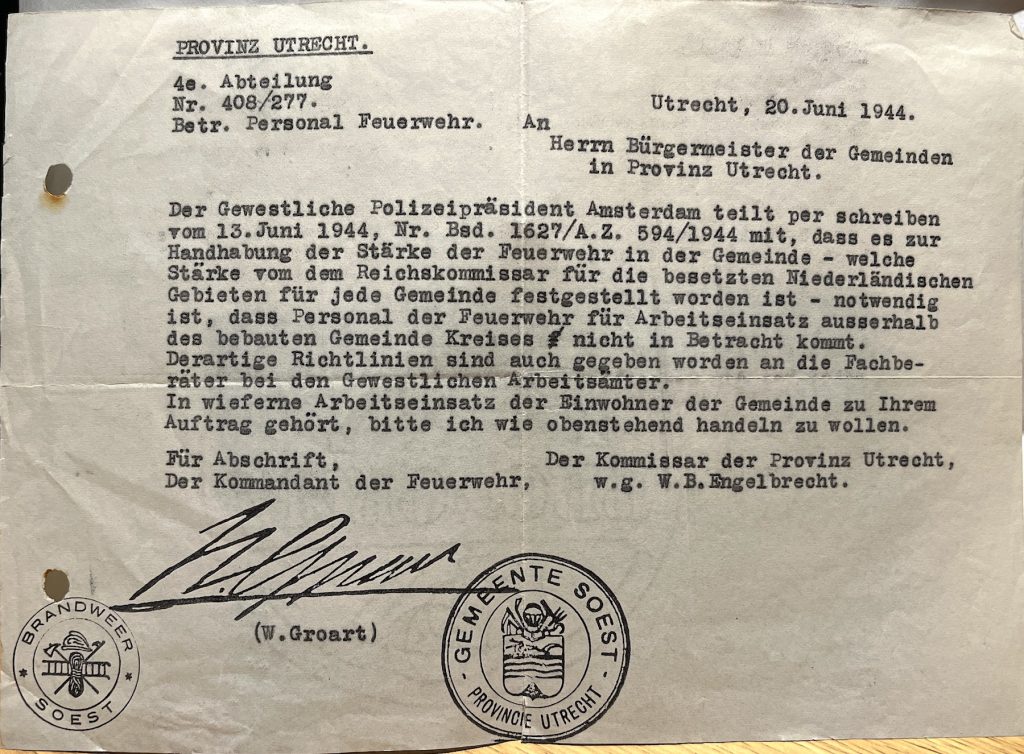
It’s a short note, but it suggests much. It’s 1944, and Utrecht – like all of Holland – is under Nazi control. Although stamped “Gemeente Soest”, and “Brandweer Soest” in Dutch, the rest is in German, the occupiers’ language. No swastika stamp, but no mistake as to who is in charge.
In German, it reads:
PROVINZ UTRECHT.
4e. Abteilung, Nr. 408/277. Betr. Personal Feuerwehr.
Utrecht, 20.Juni 1944. An, Herrn Bürgermeister der Gemeinden in Provinz Utrecht.
Der Gewestliche Polizeipräsident Amsterdam teilt per schreiben vom 13.Juni 1944, Nr. Bsd. 1627/A.Z. 594/1944 mit, dass es zur Handhabung der Stärke der Feuerwehr in der Gemeinde – welche Stärke vom dem Reichskommissar für die besetzten Niederländischen Gebieten für jede Gemeinde festgestellt worden ist – notwendig ist, dass Personal der Feuerwehr für Arbeitseinsatz ausserhalb des bebauten Gemeinde Kreises nicht in Betracht kommt. Derartige Richtlinien sind auch gegeben worden an die Fachbe-räter bei den Gewestlichen Arbeitsämter. In wieferne Arbeitseinsatz der Einwohner der Gemeinde zu Ihrem Auftrag gehört, bitte ich wie obenstehend handeln zu wollen.
Für Abschrift, Der Kommandant der Feuerwehr, (W. Groart) [signed]
Der Kommissar der Provinz Utrecht, w.g. W.B. Engelbrecht.
And translated to English,
PROVINCE OF UTRECHT.
4e. Department, No. 408/277. Re: Fire department personnel.
Utrecht, June 20, 1944. To, Mayor of the municipalities in the province of Utrecht.
The Western Police Chief Amsterdam informs by letter dated June 13, 1944, No. Bsd. 1627/A.Z. 594/1944 states that in order to manage the strength of the fire brigade in the municipality – which strength has been determined for each municipality by the Reich Commissioner for the occupied Dutch territories – it is necessary that fire brigade personnel are not deployed for work outside the built-up municipal district. Such guidelines have also been given to the specialist advisors at the Western employment offices. To the extent that the work of the community’s residents is part of your mission, I ask you to act as described above.
For copy, The Commander of the Fire Department, (W. Groart) [signed]
The Commissioner of the Province of Utrecht, w.g. W.B. Engelbrecht.
Willem Groart was the chief of the voluntary fire brigade in Soest, since 1928. This letter issued by him provides an “out” for the members of the fire brigade – that they are essential personel, not to be swept up by the Arbeitseinsatz. This term can best be translated into English as forced labour, a German program to bring young Dutch men to their factories and construction projects. Somewhere around 600,000 men were taken from Holland under this program, of which around 30,000 died.
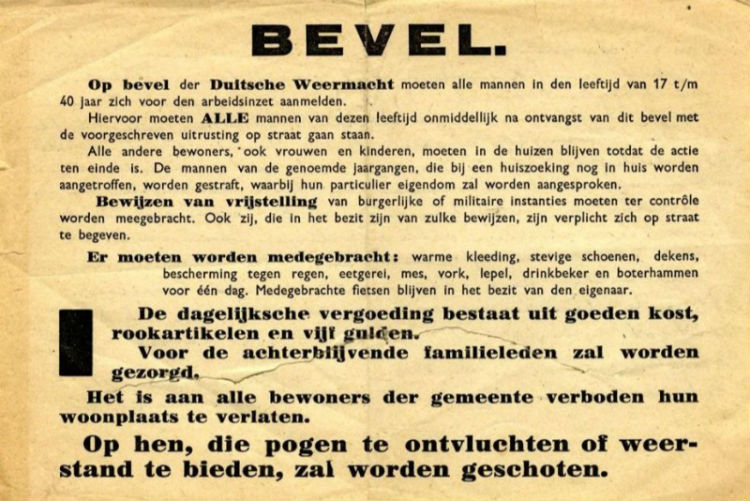
The letter by Willem Groart is sent to the mayors of the local authorities in Utrecht. It feels like a step outside his authority – perhaps risky under the circumstances. But it is a plea to ensure that anyone that can be saved from this obligation, is.
In June 1944, World War II is at its apex. Just three weeks before the letter is written, the Normany Landings took place – on D-Day, June 6th, 1944. In two months time, Operation Market Garden would commence, the first attempt to free Holland. But right now, the situation remains dire.
Armed to the teeth: Christmas 1936
The second item out of the envelope is a photograph. I’ve seen it before, but not in years. Scanned, and sharpened, it reveals many details I never noticed before.
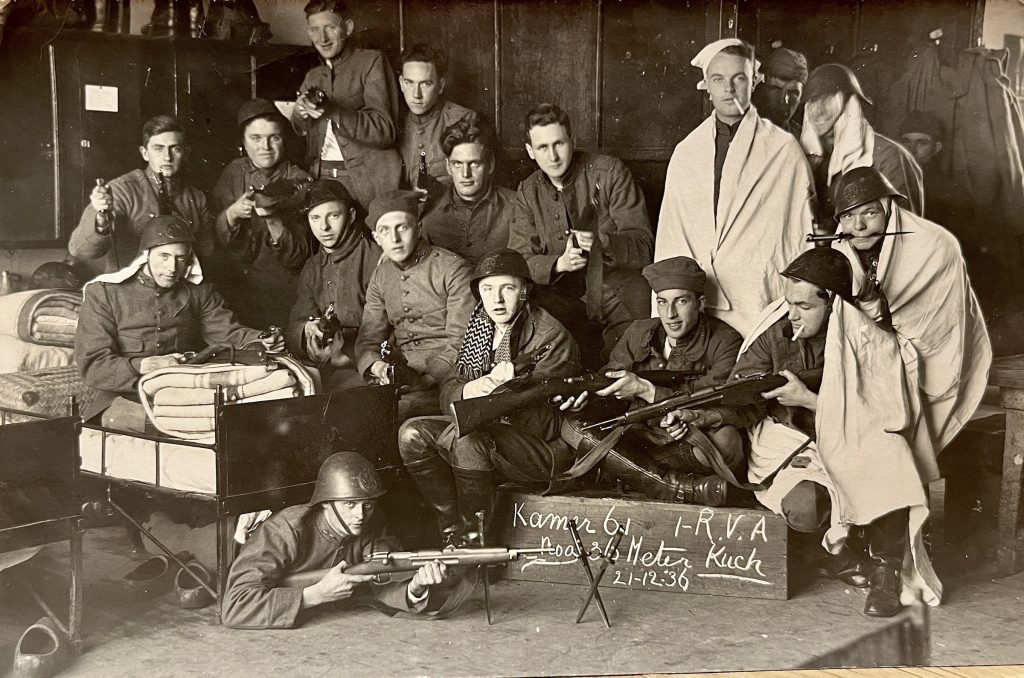
Thanks to the sign, it’s clear the photo was taken on December 21st, 1936. The board reads, Kamer 61, 1-R.V.A., Nog 36 Meter, Kuch.
I have no idea what any of this means, nor what my father is doing here. He’s back and centre, holding the gun. Is this a training camp? At Christmas? There’s levity in the picture – a fun shot, but what’s the background?
There are some clues in the picture. The military uniforms are cavalry outfits, evident from the knee patches and the boots. Standard issue seems to be a knife and a shotgun. The clogs under the beds suggest a camp, a dormitory.
The research starts! The R.V.A. stands for Regiment Veld Artillerie. 1-R.V.A. is the unit. Field artillery.
The next photo reads “Blaricum, 16-6 ’37“
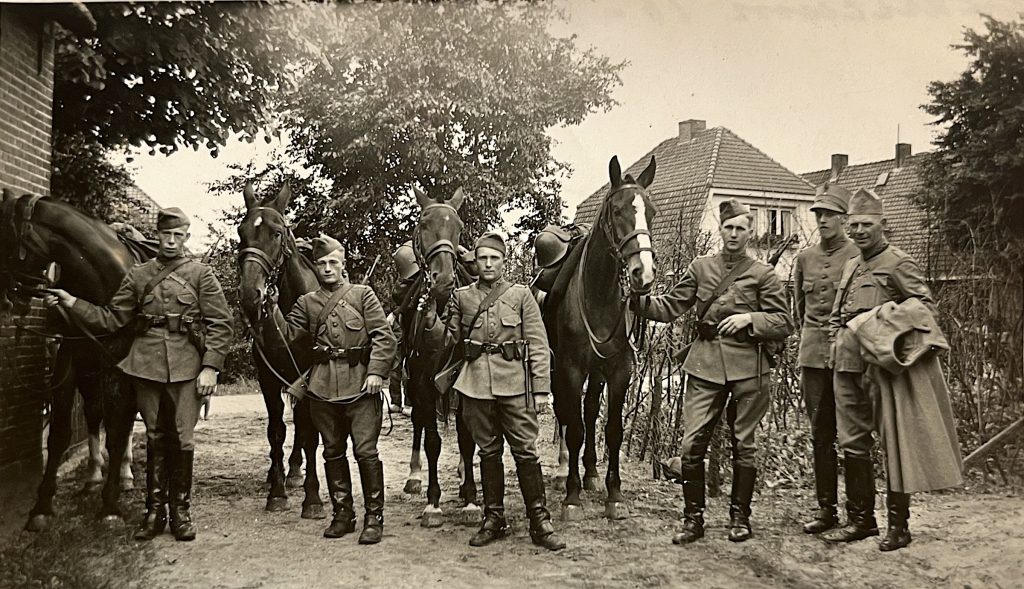
Adding in some colour …
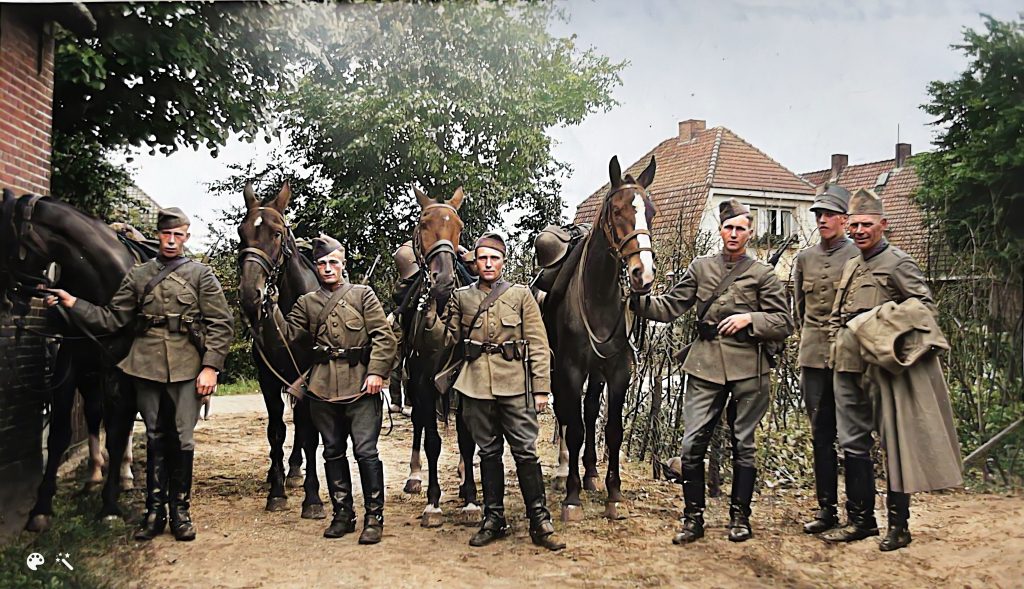
My father here is the furthest on the right, with his horse. June 16th, 1937. He’s 21.
Arbeitseinsatz: called up for compulsary German labour
In March 1943, Fred was ordered to report to Amersfoort for a medical examination, in preparation for transport to Germany for forced labour 1
His military record appears to be preserved in the Nationaal Archief 2. I ordered the scan in October 2024. It’s always a lottery when requesting scans. Sometimes, there is an array of useful and interesting information. Other times, more often in fact, there is close to nothing – one page with some official document and little else.
So, the scans arrive. I’m at my desk at the back of our Amsterdam home, it’s shortly after 9 o’clock in the evening. Time to open them up. Wow, 18 pages. I had hoped for something potentially more extensive, and they look like they might be exactly that.
The first page is a summary, and says that he entered the military on September 17th, 1936. That ties in neatly with the picture above from December of that year, which certainly looks like a group of lads celebrating the end of their initial training. Immediately striking on the this first page is an indication that his resignation from the military came only in 1953. His Corps on leaving was marked as “GRG”, meaning the Garderegiment Grenadiers. They fought in the Meidagen of 1940, the period when Germany invaded Holland. I do recall my father saying he was involved in that defence of Holland, and his unit were positioned near the Grebbenberg, a well known fight in the 9-day long battle against the Germans. He mentioned how they were placed on standby to fight, and waited for several days (perhaps over a weekend), but in the end, did not see active fighting.
Homes
Stadhouderslaan 59, Soest
The house here is uncommon, but the style is typically Dutch, with thatched roof. Fred was living here in 1938, aged 22. A photograph shows Fred standing here in the late 60’s. In 2024, the house is still here >. The house is in the countryside betweem Soestdijk, Soest, and Baarn, and one of their closest neighbours was the Royal Palace of Soestdijk, where Princess Juliana lived as Queen of the Netherlands, from 1948 onwards. A family story recounts how Fred’s son Peter (b. 1946) was in the same school class as one of the royal family (Princess Margriet >), and was often invited to the Palace for birthday’s and other play dates.
In 1934 (30-Apr) P. Zee (my grandfather) is noted here > in the Notulen Raad Soest, with a request for planning permission to build three apartments, all under one roof, at another address on the Stadhouderslaan. On June 22, the council changed their mind, and rejected the application >, possibly because the rooms were going to be too small >.

Zwaluweneg 11, Soest
Stadhouderslaan 108, Soest
Timeline
21-Sep-1938 F. Zee living Stadhouderslaan 59, Soest. Spanish lessons. >
04-Dec-1943 Mej. N. Zee [Nel] Zwaluwenweg 11, Soest. Orchest ad. >
16-Sep-1945 Toos Hendriksen & Fred Zee verloofd. Address Zwaluwenweg 11, Soest. >
30-Jun-1946 Nel Zee & Jan van Breuklen verloofd. Zwaluwenweg 11, Soestdijk. > 07-May-1947 Ondertrouwd >
20-Dec-1946 Living Stadhouderslaan 108, Soest > Birth of son P.L.
Citations
